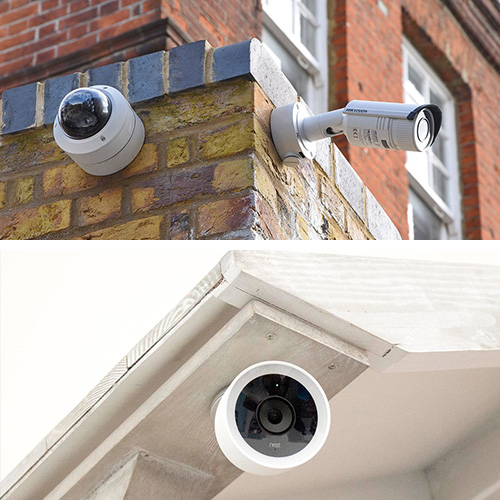A surveillance system protects more than physical assets. It also protects staff, visitors, and sensitive records. Offices and clinics have specific security needs based on their size, layout, and daily traffic. Choosing the right setup means looking at your building, work routines, and the risks that matter most to your operation.
Surveillance planning starts with the type of coverage you need. A small office with two entrances may only require a few cameras, but a medical clinic with multiple patient rooms will need more coverage. The right mix of camera types, placement, and storage will give you clear records without unnecessary gaps.
Assessing Your Space and Risks
Before buying equipment, evaluate where problems could occur. High-traffic areas, building entrances, storage rooms, and parking lots are common points of concern. Offices in multi-tenant buildings may also want cameras at shared entry doors or lobbies.
Think about your hours of operation. Businesses that close at night may need stronger low-light or infrared capabilities. Clinics with evening appointments may need cameras that handle changing light conditions well. For example, a camera that can adjust to both bright afternoon sun and dim evening lighting will keep images clear at all times.
Camera Types and Their Roles
The right camera mix depends on your floor plan and the type of activity you need to record. Common camera types include:
- Fixed lens cameras: Best for steady coverage of hallways, waiting areas, or check-in desks.
- Pan-tilt-zoom cameras: Good for larger spaces that need adjustable views.
- Doorbell or intercom cameras: These are useful for controlled entry to offices or secure clinic areas.
Each camera should match its location. A hallway camera needs a different viewing angle than one aimed at a parking lot. Choosing based on the environment will improve performance and video quality.
Storage and Access Options
Video storage affects how long you can review past events. Local storage on a network video recorder (NVR) is a common choice for clinics that need to keep footage secure and offline. Cloud storage is useful for owners and managers who want remote access from a phone or laptop.
Some businesses use both options. Local storage gives immediate access inside the building, and cloud storage provides a backup in case of theft or damage to on-site equipment. Decide how long you need to keep footage. Many offices keep 30 days of recordings, while some clinics store 90 days to meet insurance or compliance guidelines.
Integration With Other Systems
Modern surveillance systems can work with access control, alarms, and environmental sensors. Linking these tools can make monitoring more effective. For example, a door sensor can trigger nearby cameras to record before and after opening the entry point. In a clinic, this could help track deliveries or after-hours access to storage areas.
Intercom integration is another option. Visitors can press a call button, and staff can see and speak with them before unlocking a door. This is useful for both office buildings and healthcare spaces with controlled areas.
Professional Installation vs. DIY
Professional installation offers precise placement and proper wiring. Installers can run cables through walls and ceilings without disrupting daily operations. They can also test camera angles and adjust settings to meet your needs.
A DIY system may work for small offices with basic requirements, but commercial-grade systems usually benefit from expert setup. This is especially true in clinics, where camera placement must respect privacy laws while still providing security coverage.
Key Points to Consider
When comparing surveillance options, focus on:
- Camera coverage: Avoid blind spots by mapping camera fields of view.
- Lighting conditions: Choose cameras rated for your environment.
- Storage duration: Match retention to your operational and compliance needs.
- Integration needs: Decide if you want cameras linked to access control or alarms.
These points will guide your system design and help you choose the right mix of technology and features.
Ongoing Monitoring and Maintenance
Once installed, your surveillance system needs regular checks. Review footage quality, test camera angles, and confirm that storage is working. Update passwords and user permissions to keep access secure. For clinics, verify that your system settings follow HIPAA privacy requirements.
A well-chosen system will provide clear images, reliable storage, and flexible access for staff. It will also support your building’s safety without interfering with normal operations. With careful planning and the right equipment, your office or clinic can maintain daily security and accountability.
How La Jolla Security Systems Can Help
La Jolla Security Systems designs and installs surveillance setups that match the needs of offices and clinics across San Diego County. Our team evaluates your layout, recommends the right camera types, and configures storage options that fit your workflow. We can also integrate cameras with access control, alarms, and environmental sensors for a complete security approach.
Since 2009, we’ve worked with businesses from small private offices to multi-room medical facilities. We offer both on-site installation and ongoing system support to keep your surveillance reliable year-round. Contact us today to schedule a walkthrough and receive a custom security plan for your building.
